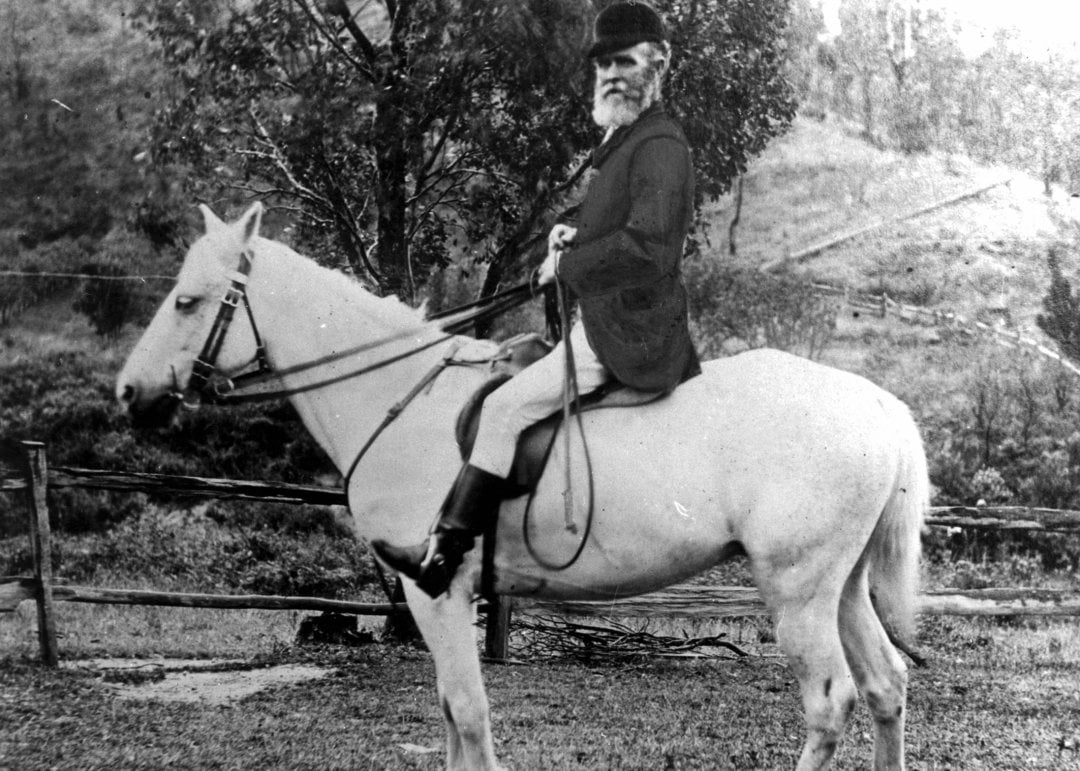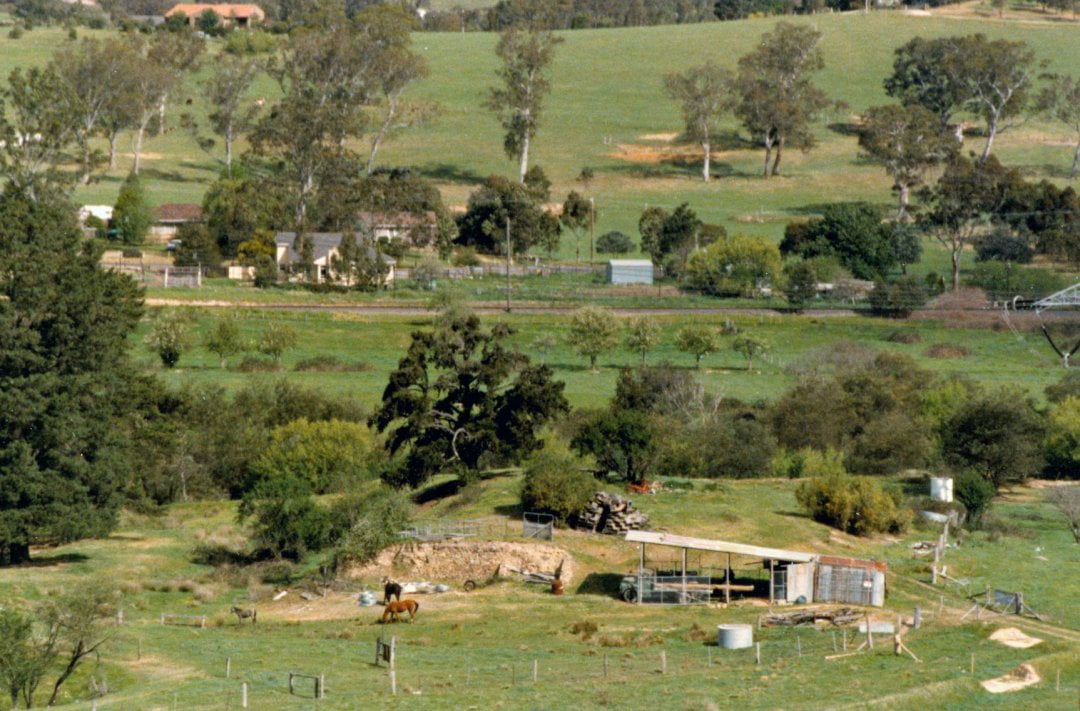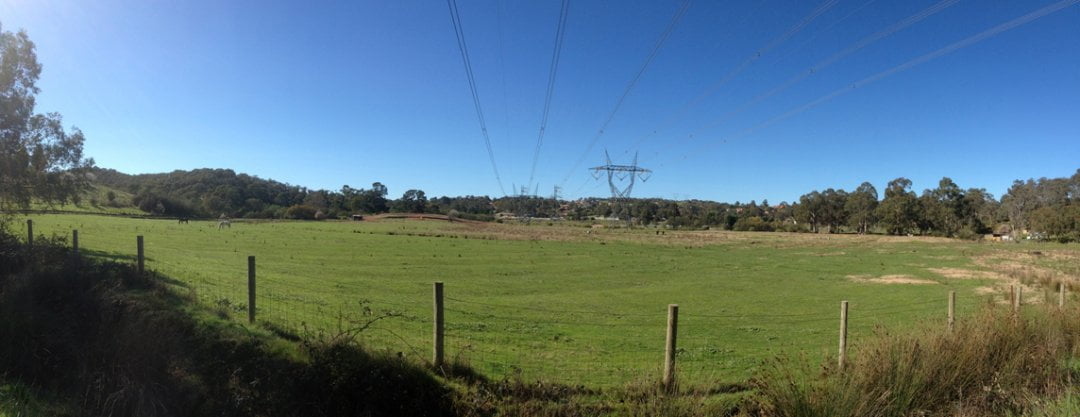HERBERT FAMILY
With the continuing development along Collard Drive and down the hills to Herbert’s Lane and the creek flats, it is timely to share some information about the original property that goes back to the pioneering days of Diamond Creek.
The new estates around Collard Drive are being built on what was 100 acres of land owned and farmed by the Herbert Family. It spread along Broad Gully Road from where Herbert’s Lane cuts in up to where it meets Black Gully Road then across the hills and creek flats to the east.
William Wandless Herbert arrived in Melbourne in 1847. He spent had his early life in the Scottish Borders and the northern part of the English county of Northumberland where he was a sheep farmer. We are not sure why he chose to settle in Diamond Creek but he may have met the Wilson family who were Diamond Creek pioneers. The topography of our area, similar to his home, may have been a factor as well as its potential for farming. Two years after he bought the land in 1852 he married Elizabeth, daughter of John Wilson and Martha Burgess. They named their property ‘Greenhills’.
When gold was discovered in Diamond Creek in 1862, mines of varying size and success were opened across the hills and gullies. William Herbert started the Nillumbik Mine in the gully that runs from Collard Drive down to the creek. His success with mining allowed him to increase his holding in Diamond Creek by another 212 acres in 1866 and to also buy 312 acres in Nutfield north of Hurstbridge in 1872. Portions of the Nutfield/Hurstbridge property, which the family called ‘The Station’, are still owned and farmed by William’s descendants today.
The family were active in the community in local organisations and groups. One of those groups was the Diamond Creek Racing Club. When the Diamond Creek Race Meeting was run on the creek flats near the house each year a dance usually followed and locals danced into the night in the barn below the house.
As one of the earliest house sites in the east side of Diamond Creek which still contains foundations and the stone wall structure of the barns built and used by the family from the time they began farming in 1852, it is vital that this rise of land above the creek and the barn stonework is not impacted by any current or future development. An archaeological dig was completed at the site in the early 1990’s which identified and recorded its importance to our local and pioneering history.
Details of ‘Herberts Ruin’ can be found on the Victorian Heritage Database – https://vhd.heritagecouncil.vic.gov.au/places/12203


DIAMOND CREEK RACING CLUB
The Diamond Creek Racing Club ran a race meeting each year from the late 1870’s. The annual meetings were usually held in December under Victorian Racing Club rules as part of the yearly racing calendar. The race meetings were very popular, drawing entries and spectators from across the district.
In December 1880 the Diamond Creek Race Meeting was moved to a new course on the Herbert family property. The Argus newspaper of 6 January 1881 reported that three races were held and the meeting was ‘a successful one, the weather being delightful and the racing good’.
The meetings were held between Christmas and New Year with the weather usually warm and dry, which appears to be a good thing because the track was reported to be rough in places with some difficult bends. A report of the December 1883 meeting gives a wonderful insight into the fun to be had by locals and visitors alike.
DIAMOND CREEK ANNUAL RACES.
The above annual races were held on Saturday last, 29th December, and being favored with fine weather, an excellent programme, and good racing, proved, in every respect, the most successful race meeting ever held on the Diamond. Great credit is due to the stewards for the manner in which they carried out their business, also to the worthy and energetic secretary, Mr. John Herbert, who gave satisfaction to all interested. This race meeting was held in Mr. Herbert’s paddock, and the course being surrounded by rising grounds caused a magnificent view of the racing on the flat. Both the hill and flat were crowded with visitors. The fair sex, as usual, appeared to congregate freely on the hill. Gambling tables (various descriptions), totalisators, sweeps, music, swings, Punch and Judy shows, and other amusements were indulged in freely during the day. The “band of music,” which greatly enlivened the whole assemblage, is well worthy of the above quotation, and we would, on any future occasion, strongly suggest music at local race meetings. The programme opened by running the hurdle race, and great excitement prevailed during the race. Gratis was a warm favorite, but he struck heavily at the first jump, and Cyrus, fell at the second jump, Mayflower jumping clean over him, both jockeys escaped unhurt. In the Consolation Stakes, within a few yards off the winning post in the last round, a nasty fall occurred to Mr. Mannigan, through the stirrup leather breaking, giving him a severe shaking. The following gentlemen acted as follows :— Stewards : Messrs. Joseph Lannon, N. Butler, M. Lannon, J. Cowin, N. Ellis, R. Wadeson, and J. Herbert. Starter : T. Armstrong, Esq. Judge : E. H. Cameron, Esq. Treasurer : Mr. J. Cowin. Clerk of the course : Mr. R. Hurst. (Evelyn Observer, and South and East Bourke Record)

The track on the property was used throughout the 1880’s until the Herbert family planted orchards on the creek flats. Race meetings were then moved to the property of William Ellis and his nephew Nathaniel Ellis on the creek flats directly across the creek in an area that now bounded by the train line and the creek. There are some wonderful reports of those meeting to be found on the National Library of Australia’s Digitised Newspaper Archive (TROVE).




As a dependant of the Herberts, I found it to be quite an interesting article.
Hello David, we are glad you like this article and found it interesting. I am a Herbert descendant too and would be interested to know which part of the family you are from. All the best Jean
Sorry to loose touch, but circumstances and a bout of Covid hasn’t helped.
As a ‘Herbert’ with the name Jean, could I ask if you are a Sutherland from Yarambat? I used to play with Alex and Jean back in the 40’s and 50’s.
David Herbert
Hello David, I will email you some details.
Thanks for this fascinating article. I have just started researching my maternal side family history and couldn’t believe my luck when I stumbled on this site and this reference to an Australian Herbert relation.
My mum was a English descendent of the Herberts in Northumberland and we still have a few of bits of furniture passed down from the Herbert side.
I have just been reading a letter from one of my ancestors, Thomas Herbert Coombe, dated 1856. He had emigrated from Liverpool a few years earlier (no date yet) and writes that after some (not very successful) gold prospecting (“a small handful of gold”) he had moved to Diamond Creek to live with his uncle William W Herbert (above) in about 1853.
Thomas Coombe had just purchased a small plot of crown land (65 acres) in Diamond Creek on/near the River Yarra about 15 miles from William Herberts place.
Interestingly, he talks about William Herbert marrying Elizabeth Wilson on August 8th 1854 with a son born on June 1st 1855.
He describes the Wilsons as “very industrious people and done very well” and “natives of London”
Anyway thanks for this and if anyone can help point me in direction for any info on what happened to Thomas Herbert Coombe and also more on William Herbert that would fantastic.
James Herbert McConnell ( for some reason the “Herbert” is passed down as a middle name!)
Thank you so much for contacting us James, I have replied to you by email.
I have discovered this document online. I have no idea if it is genuine (perhaps you do) and I am doubtful as being a Herbert of Diamond Creek lineage, I am sure that knowledge of being descendants of original convicts would have been passed down to us.
As it is a ‘badge of honour’ to be a convict descendant there days, I hope it is genuine. I would appreciate any info you have on that document.
I have a document purporting to show that William was actually transported here as a convict, but your system will not allow me to send it.
Could you please contact me by email so I can forward it to you.
Hello David, I will email you separately about your question and the document you mention.